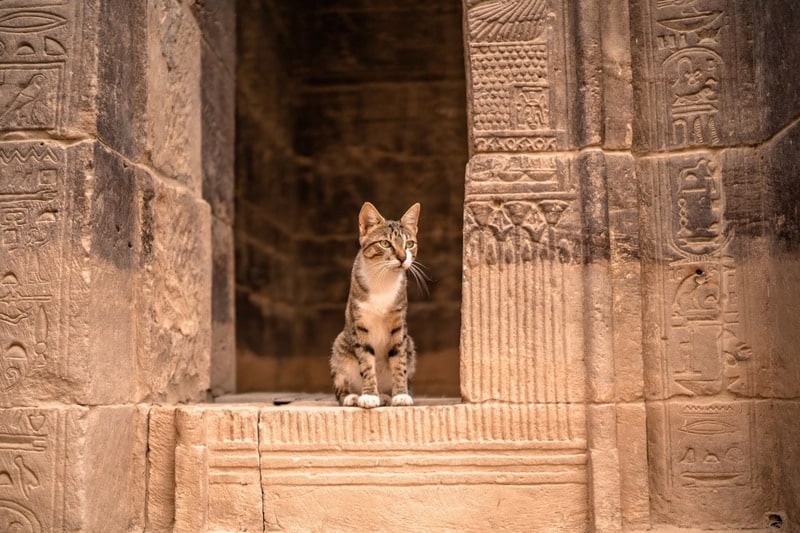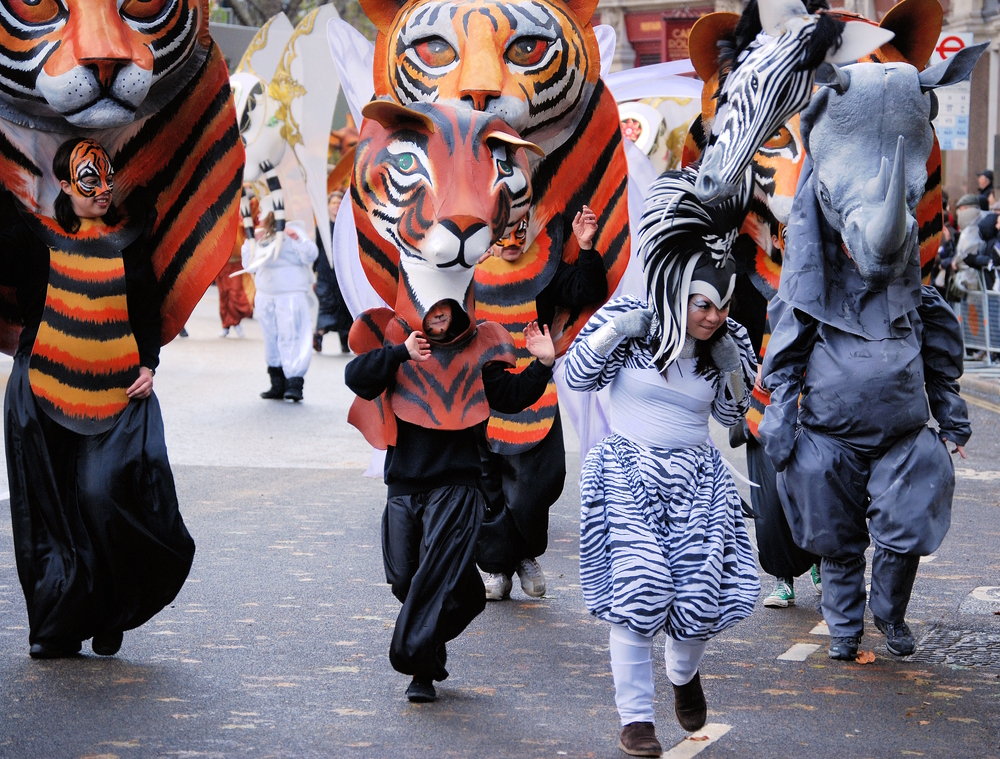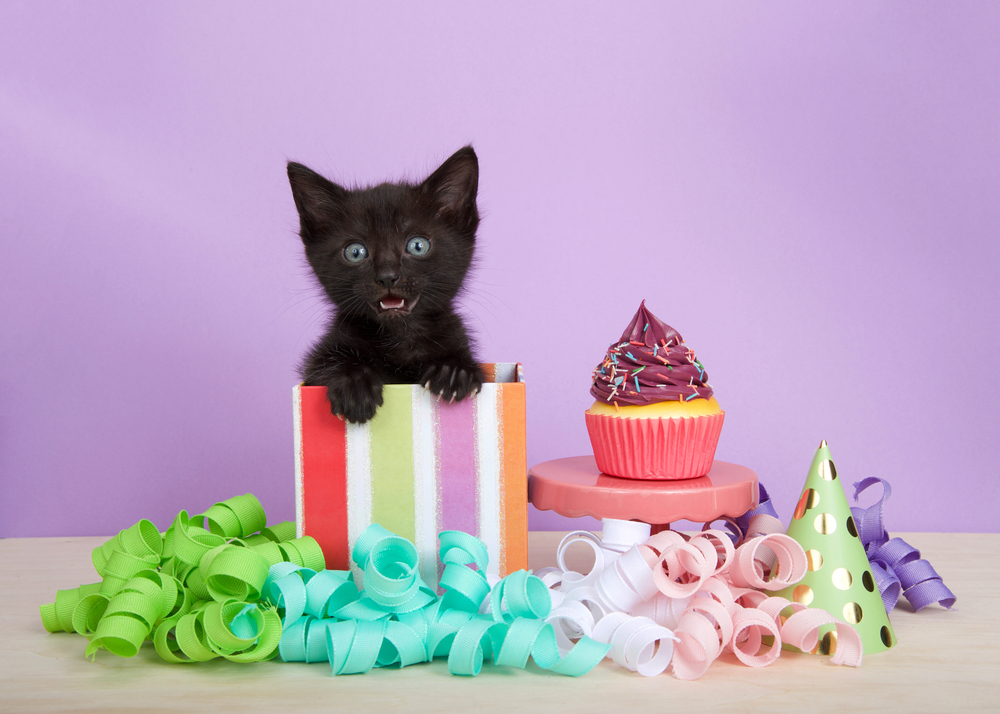The ancient Egyptian era is associated with very distinct historical phenomena. It was the time of mummies, pharaohs, pyramids, Cleopatra, and cats. It is widely believed that the ancient Egyptians revered cats to such an extent that they worshipped them. As it turns out, that’s not exactly true, and we’ll clarify this misconception in due course.
Ancient Egypt’s impressive epoch spanned over 3,000 years, ending in 30 BC when the region was captured and annexed to Rome. It is a time marked by an advanced civilization and remarkable technological, mechanical, and agricultural innovations, some of which continue to baffle scholars.
The regal cat featured strongly in ancient Egyptian civilization is reverently represented in many religious and social contexts. In this article, we’ll discuss 10 facts about cats in ancient Egypt that will cause you to look at our feline friends in a different light!

The 10 Facts About Cats in Ancient Egypt
Cats occupied a notable role in ancient Egyptian civilization. They were considered superior to most other animals and featured significantly in important contexts.
1. Cats Feature Prominently in Ancient Egyptian Art
Cats are abundantly represented in ancient Egyptian art. Various pieces, including murals, statues, amulets, hieroglyphics, and sculptures, have been found that date back to before the 30th century BC.
Some of these celebrate deities with feline characteristics. Others depict wild cats such as cheetahs and lions and some give a rough idea of the domestic cat’s role in the lives of the ancient Egyptians. The latter depicts scenes of cats protecting their owners from snakes and scorpions, hunting birds with people, and providing companionship.
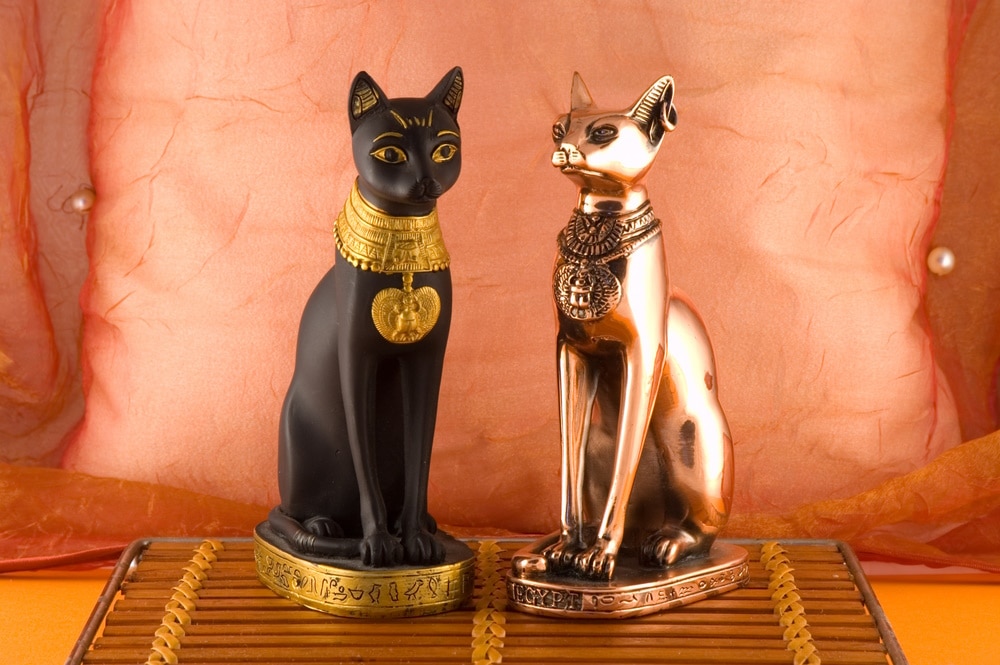
2. The Ancient Egyptians Did Not Worship Cats or Any Animals
It is mistakenly believed that the ancient Egyptians were cat-worshippers, which is untrue. Rather, they used the likeness of cats to represent several of their deities. They revered cats for their effective vermin control and protection of their food stores.
Many ancient Egyptians also believed they had a special connection to the gods. This probably resulted in them considering them near god-like and a worthy likeness of the gods.
The truth is that the ancient Egyptians did not worship cats or any other animals.
3. Feline Relationships were Continued into the Afterlife
The ancient Egyptians so adored their cats that they desired that they join them in the afterlife. This is apparent in depictions on the wall of tombs, showing how cats were an intricate part of the family unit.
Mummified cats have been found in the tombs of what were presumably their owners. There was also a belief that if you were buried with a cat, you could occupy their body in the afterlife.
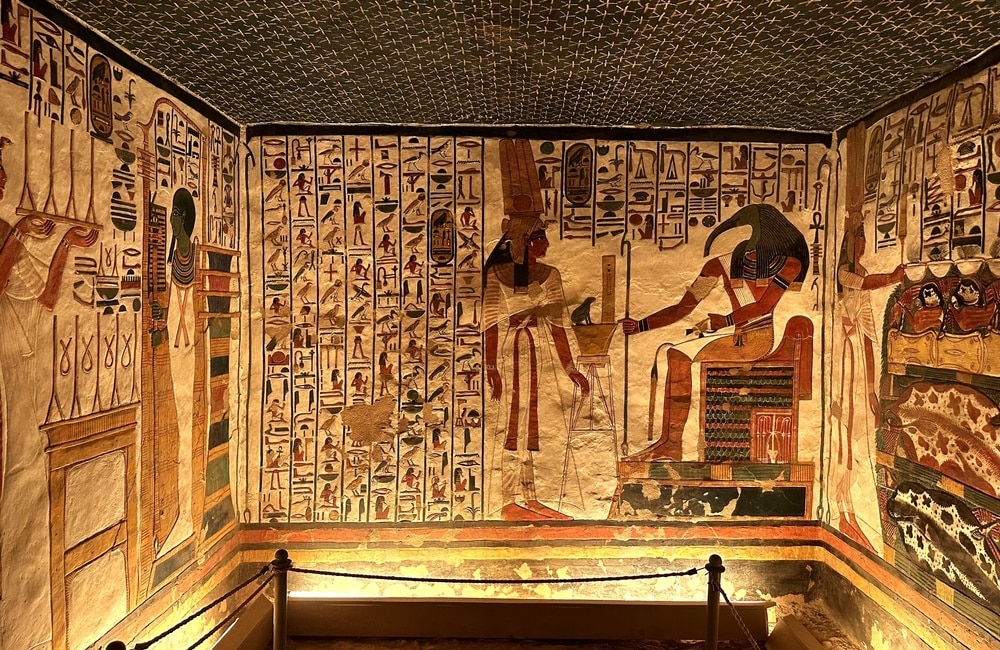
4. Cats Were Mummified
As well as the mummified pet cats that have been discovered in the tombs of individuals, there are also other situations where mummified cats have been found. It is thought that the practice of mummifying cats may have spurred an entire industry where cats were bred specifically to be burial mates of humans.
It is a somewhat perplexing contradiction since, at the time, the killing of cats was strictly illegal and punishable by death, except for this particular sacrificial purpose. This provides insight into how vital the afterlife was to the ancient Egyptians.
5. Ancient Egyptian Nobility Popularized Keeping Cats as Pets
The Pharaohs and other royals were most probably responsible for popularizing the keeping of cats as pets. This phenomenon is observed in many ancient and modern cultures where the nobility is seen as trendsetters whose actions are copied by the commoners.
The nobility would dress their cats up in gold and jewels and allow them free rein, even letting them eat food off their plates. Of course, the commoners were in no position to do the same, but they made jewelry depicting cats for themselves.
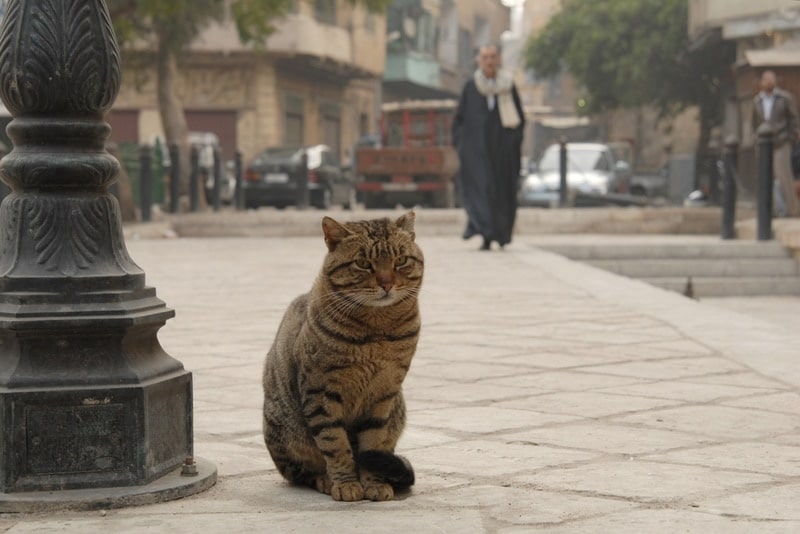
6. The Ancient Egyptian Word for Cat Is “Miu”
In a piece of beautiful synchronicity, it is believed that the ancient Egyptian word for cat was “miu” or “mau.” When spelled out phonetically, it sounds almost exactly like a cat’s meow.
Maybe it’s not so synchronous after all—perhaps the ancient Egyptians knew precisely what they were doing when they named the little carnivore!
7. Ancient Egyptians Would Shave Their Eyebrows in Mourning the Passing of a Beloved Pet Cat
Cats occupied such an esteemed position in ancient Egyptian households that their owners would enter a mourning phase when they passed. To mark their mourning, they would shave off their eyebrows. The mourning period would only be over when their eyebrows had grown back.

8. Ancient Egyptian Cats Wore Beautiful, Ornate Collars
Since humans began having relationships with and domesticating animals, they have fitted harnesses and collars of various descriptions on them.
The cats of ancient Egypt were no different, but since they occupied such a privileged ranking in society, their collars were appropriately embellished. Egyptian cats’ collars were stunning and valuable artifacts adorned with precious metals, gems, stones, and beads.
9. The Ancient Egyptians are Credited for the Establishment of the First Pet Cemetery
In 2011, archaeologists discovered what is believed to be the earliest pet cemetery in Berenice. They had been excavating an area believed to be an ancient Egyptian dump when they came across the remains of 100s of small animals.
They noticed that the animals had all been in good condition, having lived comfortable lives, and mostly died naturally rather than in cruel or unfortunate ways. The animals had all been carefully and considerately buried in makeshift coffins, leaves, blankets, or between bowls.
This led them to conclude that these animals, the majority of which were cats, had been cherished pets, and they had stumbled upon an ancient pet cemetery.
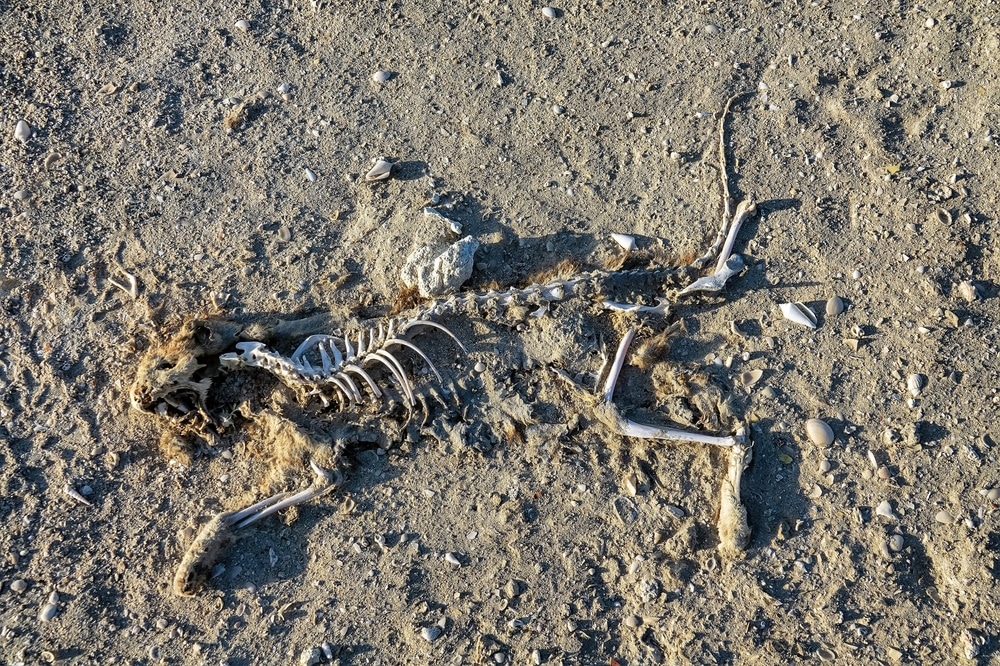
10. The Sphinx of Giza Is an Enduring Testament to the Ancient Egyptians’ Veneration of Cats
The Great Sphinx of Giza is perhaps the most famous representation of a cat from ancient Egyptian times. It is one of the world’s largest sculptures at 66 feet high and an impressive 240 feet long.
It is thought to date back to the reign of King Khafre, whose face it depicts, complete with regal headwear. The body is that of a lion. There is, however, speculation about the Sphinx’s origins and representation. It is impossible to know for sure since no definitive records exist.
It was carved out of one block of limestone around 2,575 to 2,465 BC, and it is thought that the entire sculpture was painted at that time. Historians estimate it could have taken 100 sculptors about three years to complete.

Conclusion
The role that cats played in ancient Egyptian society is perhaps one of the most intriguing aspects of the animal’s history. It is no wonder our modern-day cats retain a regal attitude even today. Veneration runs in their bloodlines. We may even be thankful, in large part, to the Ancient Egyptians for the no less important role that our beloved cats play in our lives today.
You might also be interested in:
- 7 Cat Gods & Cat Goddesses From Ancient Cultures
- Did Cleopatra Have Cats? Egyptian Cat History Explained
Featured Image Credit: Be Seen and Bloom, Shutterstock
Contents
- The 10 Facts About Cats in Ancient Egypt
- 1. Cats Feature Prominently in Ancient Egyptian Art
- 2. The Ancient Egyptians Did Not Worship Cats or Any Animals
- 3. Feline Relationships were Continued into the Afterlife
- 4. Cats Were Mummified
- 5. Ancient Egyptian Nobility Popularized Keeping Cats as Pets
- 6. The Ancient Egyptian Word for Cat Is “Miu”
- 7. Ancient Egyptians Would Shave Their Eyebrows in Mourning the Passing of a Beloved Pet Cat
- 8. Ancient Egyptian Cats Wore Beautiful, Ornate Collars
- 9. The Ancient Egyptians are Credited for the Establishment of the First Pet Cemetery
- 10. The Sphinx of Giza Is an Enduring Testament to the Ancient Egyptians’ Veneration of Cats
- Conclusion

